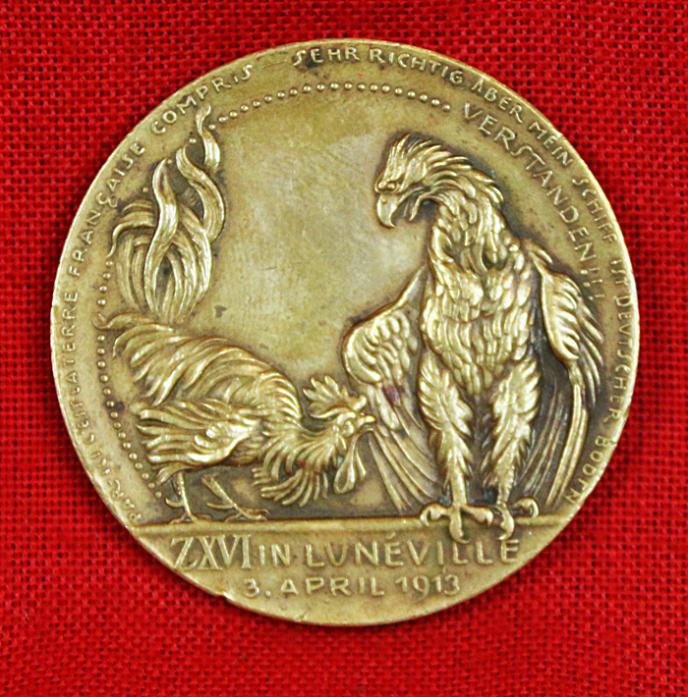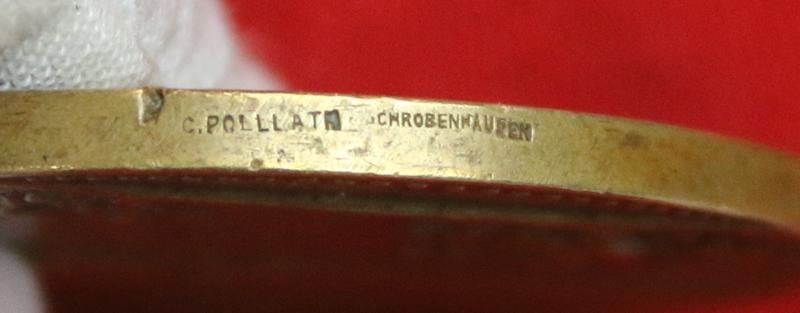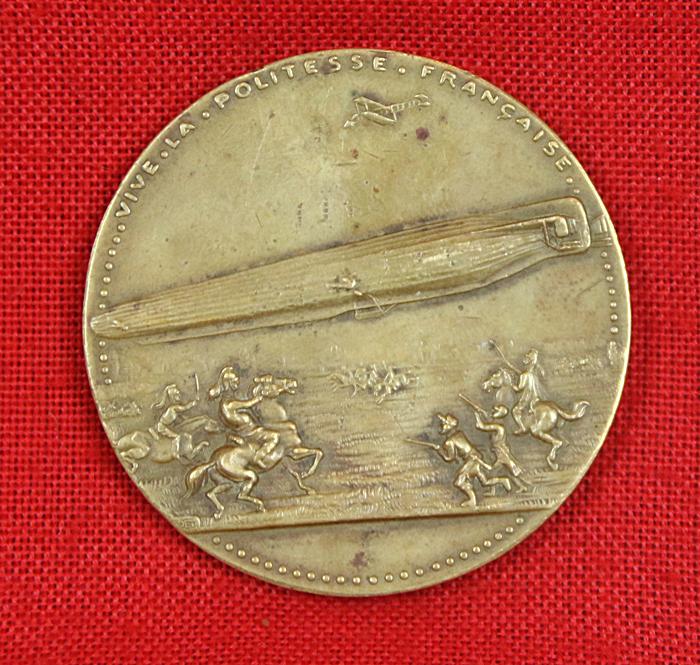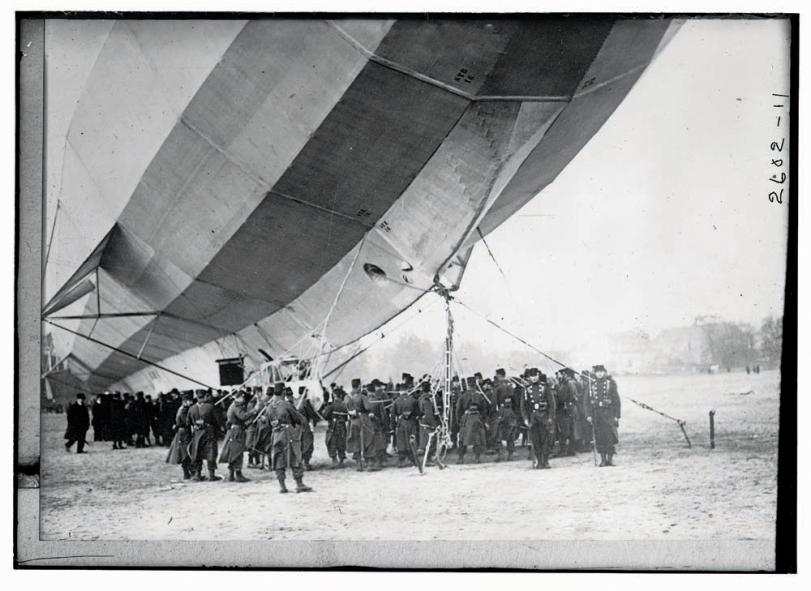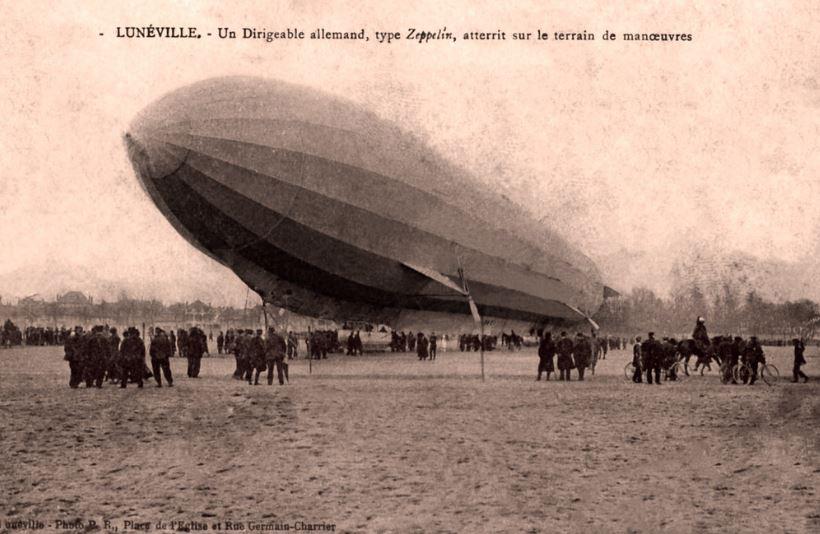Imperial German Bronze Zeppelin Forced Landing Medal 50mm With Symbolic Cockeral & Eagle
This is Goetz’ first satirical medal. The French made quite a clamor when one of Germany’s airships developed engine trouble and was forced to land in Luneville. Goetz couldn’t hold himself back from making light of the obvious over reaction by the French.
Obverse: The French Gallic coq is speaking to the German eagle, “Par ici c’est la terre Francaise, Compris-“ ( This is French soil, do you understand?). The eagle replies, “Sehr richtig, aber mein Schiff ist deutscher boden, verstanden!!” (Right indeed, but my ship is German territory, understand!!). ZXVI in Luneville, 3. April 1913 is in exergue. Reverse: A zeppelin airship involuntarily lands in Luneville as armed French troops scurry towards it and a French bi-plane surveys the situation below. Inscription: “Vive la politesse Francaise (Cheers for the French politeness). German Empire. Due to the forced landing of the airship Z IV (LZ 16) in Lunéville on 3 April 1913. Karl Goetz, medalist.
Obv: VIVE LA POLITESSE FRANÇAISE.
Airship flying left; plane above; below, french cavalry and infantry rushing to the zeppelin.
Rev: PAR ICI C'EST LA TERRE FRANÇAISE COMPRIS - SEHR RICHTIG, ABER MEIN SCHIFF IST DEUTSCHER BODEN VERSTANDEN!!! / ZXVI IN LUNÉVILLE 3. APRIL 1913.
Cock standing right arguing with eagle standing facing.
The H class Zeppelin IV, or LZ 16, landed at Lunėville in Lorraine on 3 April 1913. This Zeppelin was powered by three 160cv engines and stretched some 148 metres in length. With a maximum diameter of 14.4 metres, it enclosed a volume of some 21,000 cubic metres.
This landing could have been construed as a provocative act by the Germans, given French sensitivity over the territories of Alsace and Lorraine. Indeed Lunėville was the seat of the last Duke of Lorraine, before Louis XV annexed the Duchy in 1766, and turned the Duke’s castle into barracks.
Indeed the Zeppelin landed on the cavalry parade ground of the French Army’s camp at Lunėville. However, the Zeppelin was still undergoing testing at this time, and was carrying civilian engineers as well as military personnel.
The crew claimed that poor atmospheric conditions had led to navigational error and the low fuel carrying capacity of the Zeppelin meant they needed to refuel.
The landing on French soil does not appear intentional as the French were able to give the airship a thorough going over. General Hirschauer, head of French aircraft inspection, rushed to the scene to oversee the examination of the Zeppelin. German technical advances were thus revealed to the French before the Zeppelin was allowed to leave.
It would not be long though before the looming shape of the Zeppelin would threaten the allies in WWI. LZ 16 would undertake reconnaissance duties over East Prussia and take part in the bombing of Warsaw.
There an identical example in the Metropolitan Museum in the USA. Accession Number: 2009.266
Code: 23602
255.00 GBP

